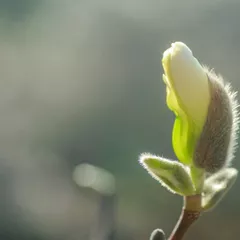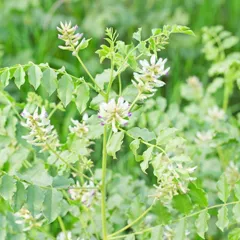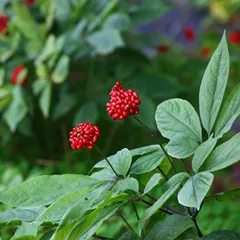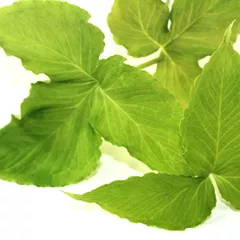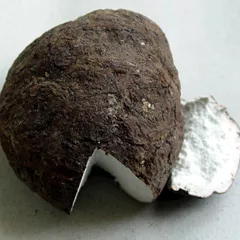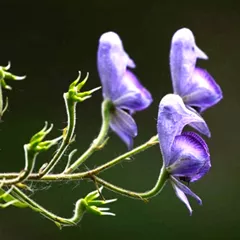Chronic bronchitis according to Chinese Medicine
The information provided here is not a replacement for a doctor. You shouldn't use it for the purpose of self-diagnosing or self-medicating but rather so you can have a more informed discussion with a professional TCM practitioner.
Chronic bronchitis factsheet
Possible causes and remedies:
Spleen and Stomach Qi Deficiency
Symptoms: Deafness Tinnitus Dizziness and seven other symptoms
Recommended formula: Bu Zhong Yi Qi Tang
Symptoms: Aversion to cold Spontaneous sweating Thirst for warm drinks and one other symptom
Recommended formula: Bu Zhong Yi Qi Tang
In Chinese Medicine, chronic bronchitis can be associated with thirteen so-called "patterns of disharmony". Chinese Medicine sees the body as a system, not a sum of isolated parts. A "pattern" is when the system's harmony is disrupted. It is not equivalent to the Western concept of "disease", as a matter of fact here chronic bronchitis can be caused by thirteen different patterns.
To understand whether someone's chronic bronchitis might be caused by a given pattern, one needs to look for signs and symptoms associated with the pattern beyond what one might typically experience from chronic bronchitis alone. For instance when chronic bronchitis is caused by the pattern Spleen and Stomach Qi Deficiency, patients also experience symptoms such as dizziness, unsteadiness, blurred vision and deafness. Similarly, patients with Spleen and Stomach Qi Deficiency typically exhibit weak (Ruo) pulses as well as a pale tongue.
We've listed below a description of the thirteen patterns associated with chronic bronchitis so that you can start to get an understanding of the various possibilities according to Chinese Medicine.
Once identified, patterns are often treated using herbal formulas. Drinking herbal infusions is the most common remedy in Chinese Medicine, together with acupuncture. Here we detail below twenty nine formulas that can help treat the various patterns associated with chronic bronchitis, depending on which pattern fits your profile.
The thirteen "patterns of disharmony" associated with chronic bronchitis
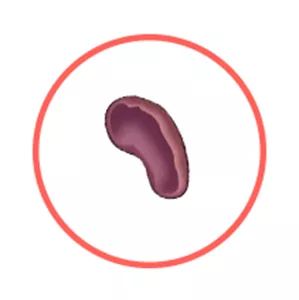
The Spleen is a so-called "Zang" Organ. Learn more about the Spleen in Chinese Medicine
Spleen and Stomach Qi Deficiency
Pulse type(s): Weak (Ruo)
Tongue color: Pale
Recommended herbal formula: Bu Zhong Yi Qi Tang
Symptoms: Deafness Tinnitus Dizziness Weak voice Unsteadiness Loose stools Poor appetite Blurred vision Pale complexion Shortness of breath
Chronic bronchitis might be due to Spleen and Stomach Qi Deficiency if the condition is paired with typical pattern symptoms such as dizziness, unsteadiness, blurred vision and deafness. Similarly, patients with Spleen and Stomach Qi Deficiency typically exhibit weak (Ruo) pulses as well as a pale tongue.
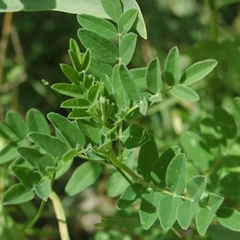
Milkvetch Roots (Huang Qi) is the key herb for Bu Zhong Yi Qi Tang, a formula used for Qi Deficiency Fever
Qi Deficiency Fever
Pulse type(s): Empty (Xu)
Tongue color: Pale
Tongue shape: Swollen
Recommended herbal formula: Bu Zhong Yi Qi Tang
Symptoms: Aversion to cold Spontaneous sweating Thirst for warm drinks Intermittent fever that worsens upon exertion
Chronic bronchitis might be due to Qi Deficiency Fever if the condition is paired with typical pattern symptoms such as intermittent fever that worsens upon exertion, spontaneous sweating, aversion to cold and thirst for warm drinks. Similarly, patients with Qi Deficiency Fever typically exhibit empty (Xu) pulses as well as a pale tongue.

The Kidneys is a so-called "Zang" Organ. Learn more about the Kidneys in Chinese Medicine
Lung and Kidney Yin Deficiency with Empty Fire
Pulse type(s): Fine (Xi), Rapid (Shu)
Tongue coating: Partial absence of coating
Tongue color: Red
Recommended herbal formula: Bai He Gu Jin Tang
Symptoms: Wheezing Dry throat Night sweats Hot palms and soles Coughing with blood-streaked sputum
Chronic bronchitis might be due to Lung and Kidney Yin Deficiency with Empty Fire if the condition is paired with typical pattern symptoms such as coughing with blood-streaked sputum, wheezing, dry throat and hot palms and soles. Similarly, patients with Lung and Kidney Yin Deficiency with Empty Fire typically exhibit fine (Xi) or rapid (Shu) pulses as well as a red tongue with partial absence of coating.
Read more about Lung and Kidney Yin Deficiency with Empty Fire here
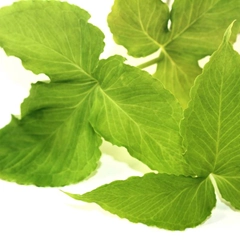
Crow-Dipper Rhizomes (Ban Xia) is the key herb for Er Chen Tang, a formula used for Damp-Cold Phlegm
Damp-Cold Phlegm
Pulse type(s): Slippery (Hua)
Tongue coating: Thick white coating
Recommended herbal formula: Er Chen Tang
Symptoms: Nausea Vomiting Dizziness Palpitations Focal distention Coughing with copious white sputum Stifling sensation in the chest and epigastrium
Chronic bronchitis might be due to Damp-Cold Phlegm if the condition is paired with typical pattern symptoms such as nausea, vomiting, stifling sensation in the chest and epigastrium and palpitations. Similarly, patients with Damp-Cold Phlegm typically exhibit slippery (Hua) pulses as well as a tongue with thick white coating.
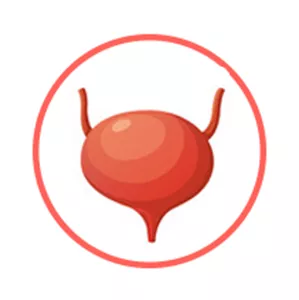
The Bladder is a so-called "Fu" Organ. Learn more about the Bladder in Chinese Medicine
Qi Stagnation in Gallbladder and Stomach with Phlegm Heat
Pulse type(s): Slippery (Hua), Wiry (Xian)
Tongue coating: Yellow coating
Recommended herbal formula: Wen Dan Tang
Symptoms: Anxiety Palpitations Slight thirst Nausea or vomiting Dizziness or vertigo Bitter taste in the mouth Indeterminate gnawing hunger Focal distention of the chest Coughing of copious thick yellow sputum Dream disturbed sleep with strange or unusual dreams
Chronic bronchitis might be due to Qi Stagnation in Gallbladder and Stomach with Phlegm Heat if the condition is paired with typical pattern symptoms such as nausea or vomiting, dizziness or vertigo, dream disturbed sleep with strange or unusual dreams and palpitations. Similarly, patients with Qi Stagnation in Gallbladder and Stomach with Phlegm Heat typically exhibit slippery (Hua) or wiry (Xian) pulses as well as a tongue with yellow coating.
Read more about Qi Stagnation in Gallbladder and Stomach with Phlegm Heat here
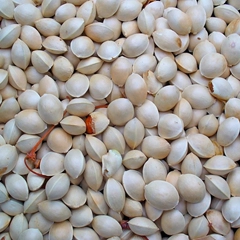
Ginkgo Nuts (Bai Guo) is the key herb for Ding Chuan Tang, a formula used for Wind-Cold invading the Interior with Phelgm-Heat
Wind-Cold invading the Interior with Phelgm-Heat
Pulse type(s): Rapid (Shu), Slippery (Hua)
Tongue coating: Yellow coating
Recommended herbal formula: Ding Chuan Tang
Symptoms: Labored breathing Coughing and wheezing with copious thick and yellow sputum
Chronic bronchitis might be due to Wind-Cold invading the Interior with Phelgm-Heat if the condition is paired with typical pattern symptoms such as labored breathing and coughing and wheezing with copious thick and yellow sputum. Similarly, patients with Wind-Cold invading the Interior with Phelgm-Heat typically exhibit rapid (Shu) or slippery (Hua) pulses as well as a tongue with yellow coating.
Read more about Wind-Cold invading the Interior with Phelgm-Heat here
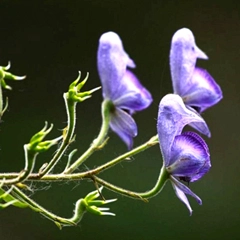
Prepared Aconite (Zhi Fu Zi) is the key herb for Fu Zi Tang, a formula used for Yang Deficiency with Cold-Damp
Yang Deficiency with Cold-Damp
Pulse type(s): Choppy (Se), Deep (Chen), Minute (Wei), Slow (Chi)
Tongue coating: Thin white coating
Recommended herbal formula: Fu Zi Tang
Symptoms: No thirst Cold extremities Generalized body pain Aching bones and joints Aversion to cold - especially at the back
Chronic bronchitis might be due to Yang Deficiency with Cold-Damp if the condition is paired with typical pattern symptoms such as generalized body pain, aching bones and joints, cold extremities and no thirst. Similarly, patients with Yang Deficiency with Cold-Damp typically exhibit choppy (Se), deep (Chen), minute (Wei) or slow (Chi) pulses as well as a tongue with thin white coating.

The Kidneys is a so-called "Zang" Organ. Learn more about the Kidneys in Chinese Medicine
Kidney Yang Deficiency
Recommended herbal formula: Ba Wei Di Huang Wan
Symptoms: Asthma Dysuria Coughing Impotence Spermatorrhea Frequent urination Persistent diarrhea Prostatic hypertrophy Spasms of the lower abdomen Cold in the lower extremities Soreness and weakness in the lower back
Chronic bronchitis might be due to Kidney Yang Deficiency if the condition is paired with typical pattern symptoms such as soreness and weakness in the lower back, cold in the lower extremities, impotence and spermatorrhea.
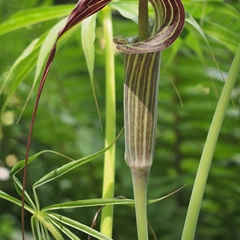
Arisaema With Bile (Dan Nan Xing) is the key herb for Qing Qi Hua Tan Wan, a formula used for Phlegm-Heat
Phlegm-Heat
Pulse type(s): Rapid (Shu), Slippery (Hua)
Tongue color: Red
Recommended herbal formula: Qing Qi Hua Tan Wan
Symptoms: Nausea Chest fullness Focal distention Coughing and wheezing with copious thick and yellow sputum
Chronic bronchitis might be due to Phlegm-Heat if the condition is paired with typical pattern symptoms such as focal distention, chest fullness, nausea and coughing and wheezing with copious thick and yellow sputum. Similarly, patients with Phlegm-Heat typically exhibit rapid (Shu) or slippery (Hua) pulses as well as a red tongue.

Dried Ginger (Gan Jiang) is the key herb for Ling Gan Wu Wei Jiang Xin Tang, a formula used for Cold-Phlegm
Cold-Phlegm
Pulse type(s): Deep (Chen), Slippery (Hua), Slow (Chi)
Tongue coating: Thick white coating
Tongue color: Pale
Tongue shape: Swollen
Recommended herbal formulas: Ling Gan Wu Wei Jiang Xin Tang San Zi Yang Qin Tang, Ling Gan Wu Wei Jiang Xin Tang
Symptoms: Nausea Cold limbs Poor appetite White and watery sputum Feeling of oppression of the chest
A famous saying in Chinese Medicine goes: "Phlegm has its source in the Kidneys, is then moved by the Spleen, and resides in the Lungs."
This couldn't be more obvious in Cold-Phlegm patterns. The "Cold" aspect of it is that it stems from a Fire Deficiency of the Gate of Life (Ming Men), which is the source of warmth for all physiological processes. This Deficiency inhibits the Spleen's ability to transform and transport the Body Fluids, which accumulate and become Phlegm and thin mucus.
The thin mucus is then sent to the Lungs, the natural next step for Body Fluids after they're filtered in the Spleen. Hence there are the symptoms of white and watery sputum as well as chest oppression in this pattern.
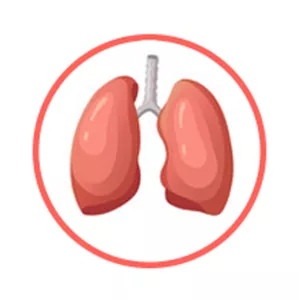
The Lungs is a so-called "Zang" Organ. Learn more about the Lungs in Chinese Medicine
Phlegm clogging the Lungs with Qi Stagnation
Pulse type(s): Slippery (Hua)
Tongue coating: Thick white coating
Recommended herbal formula: San Zi Yang Qin Tang
Symptoms: Poor appetite Digestive difficulties Focal distention of the chest Coughing and wheezing with copious sputum
Chronic bronchitis might be due to Phlegm clogging the Lungs with Qi Stagnation if the condition is paired with typical pattern symptoms such as coughing and wheezing with copious sputum, focal distention of the chest, poor appetite and digestive difficulties. Similarly, patients with Phlegm clogging the Lungs with Qi Stagnation typically exhibit slippery (Hua) pulses as well as a tongue with thick white coating.
Read more about Phlegm clogging the Lungs with Qi Stagnation here

The Lungs is a so-called "Zang" Organ. Learn more about the Lungs in Chinese Medicine
Lung Yin Deficiency
Pulse type(s): Rapid (Shu), Empty (Xu), Floating (Fu)
Tongue coating: Complete absence of coating
Tongue color: Red
Recommended herbal formulas: Yang Yin Qing Fei Tang, Qing Zao Jiu Fei Tang, Bu Fei E Jiao Tang, Jiu Xian San, Mai Men Dong Tang
Symptoms: Insomnia Dry cough Dry mouth Tiredness Thin chest Weak voice Dry throat Malar flush Hoarse voice Night sweats Tickly throat Aversion to speak Hot palms and soles Thin body lacking strength Feeling of heat in the afternoon Low-grade fever in the afternoon
Exterior Heat and Dryness can invade the Lungs and exhausts the Body Fluids. If it is not dealt with for a long time, it leads to Lung Yin Deficiency. Typical manifestations are dry cough, throat and mouth, aversion to speak as well as Hoarse voice.
Other factors can cause this pattern such as the Deficiency of Kidneys or Stomach Yin as well as prolonged Lung Qi Deficiency due to excessive smoking or use of voice.
Empty-Heat symptoms appear if the Lung Yin Deficiency condition is not treated for a while. Patients can feel malar flush, low-grade fever as well as Heat in the palms and chest, especially in the evenings.
Lung Yin Deficiency generally occurs in middle-aged and elderly patients as a result of overwork, irregular diet and smoking. However, it can also occur in a child after whooping cough.
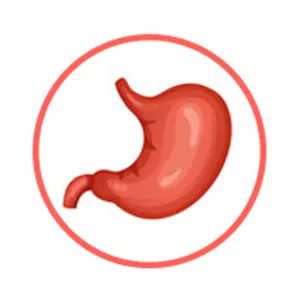
The Stomach is a so-called "Fu" Organ. Learn more about the Stomach in Chinese Medicine
Stomach Yin Deficiency
Pulse type(s): Empty (Xu), Floating (Fu)
Tongue coating: Partial absence of coating
Tongue color: Red
Recommended herbal formulas: Mai Men Dong Tang, Yi Wei Tang Shen Ling Bai Zhu San, Mai Men Dong Tang, Yi Wei Tang
Symptoms: Thirst Retching Dry mouth Hiccuping Dry throat Dry stools Constipation Poor appetite Slight thirst Bleeding gums Epigastic pain Epigastric pain No desire to eat Feeling of hunger Feeling of fullness Hot palms and soles Desire to drink in small sips Feeling of heat in the afternoon Slight feeling of fullness after eating
The Stomach is responsible for receiving foods and drinks, ripening them and sending them to the Spleen for further digestion. Therefore, the Stomach is the origin of Body Fluids. It is also an Organ that likes Cold and Dampness which are both Yin characteristics. Stomach Yin Deficiency harms this functions and cause Dryness and Heat. As a result, symptoms such as thirst, dry stools, dry mouth and dry throat appear. It also cause the tongue coating to fall off.
Due to lack of Body Fluids, there is constipation with dry stools. Retching and hiccups may also occur as Stomach's Qi downward function is impaired.
If the Yin Deficiency situation last for a long period of time, it can potentially develop Empty-Heat. It's typical manifestations are often quite mild and appears only in the afternoon or evening, such the mild fever or feeling of heat. The patients experiences thirst or hunger but there is no desire to drink or eat, or they only drink in small sips. They also prefer warm liquids and their appetite is poor.
The twenty nine herbal formulas that might help with chronic bronchitis
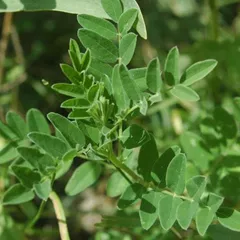


The top herbs in Bu Zhong Yi Qi Tang are Milkvetch Roots (Huang Qi), Atractylodes Rhizomes (Bai Zhu) and Ginseng (Ren Shen)
Bu Zhong Yi Qi Tang
Source date: 1247
Number of ingredients: 10 herbs
Key actions: Tonifies Qi of the Spleen and Stomach (Middle Burner). Raises the Yang. Detoxifies. Lifts what has sunken.
Why might Bu Zhong Yi Qi Tang help with chronic bronchitis?
Because it is a formula often recommended to help with the patterns Spleen and Stomach Qi Deficiency and Qi Deficiency Fever which are sometimes associated with chronic bronchitis. If any of these patterns look like something you might suffer from, this formula might help (although please seek confirmation with a professional practitioner beforehand).
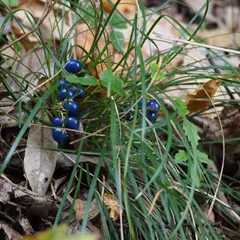

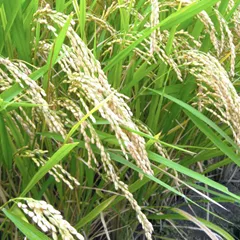
The top herbs in Mai Men Dong Tang are Dwarf Lilyturf Roots (Mai Dong), Ginseng (Ren Shen) and Rice Sprouts (Jing Mi)
Mai Men Dong Tang
Source date: 220 AD
Number of ingredients: 6 herbs
Key actions: Nourishes the Stomach. Generates Body Fluids. Directs Rebellious Qi downward.
Why might Mai Men Dong Tang help with chronic bronchitis?
Because it is a formula often recommended to help with the patterns Lung Yin Deficiency and Stomach Yin Deficiency which are sometimes associated with chronic bronchitis. If any of these patterns look like something you might suffer from, this formula might help (although please seek confirmation with a professional practitioner beforehand).
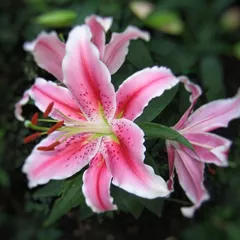


The top herbs in Bai He Gu Jin Tang are Lily Bulbs (Bai He), Prepared Rehmannia (Shu Di huang) and Unprepared Rehmannia (Di Huang)
Bai He Gu Jin Tang
Source date: 1573 AD
Number of ingredients: 10 herbs
Key actions: Nourishes Lung and Kidney Yin. Lubricates the Lung and clears phlegm.
Why might Bai He Gu Jin Tang help with chronic bronchitis?
Because it is a formula often recommended to help treat Lung and Kidney Yin Deficiency with Empty Fire, a pattern sometimes associated with chronic bronchitis. If it looks like you might suffer from Lung and Kidney Yin Deficiency with Empty Fire, this formula might help (although please seek confirmation with a professional practitioner beforehand).
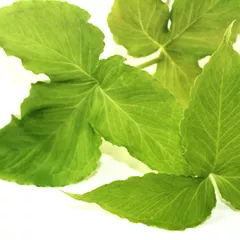
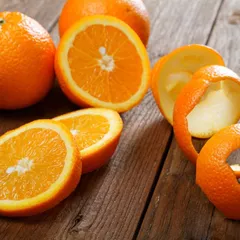

The top herbs in Er Chen Tang are Crow-Dipper Rhizomes (Ban Xia), Tangerine Peel (Chen Pi) and Poria-Cocos Mushrooms (Fu Ling)
Er Chen Tang
Source date: 1148 AD
Number of ingredients: 5 herbs
Key actions: Dries Damp and dispels Phlegm. Regulates Qi and harmonizes the Middle Burner (Stomach and Spleen).
Why might Er Chen Tang help with chronic bronchitis?
Because it is a formula often recommended to help treat Damp-Cold Phlegm, a pattern sometimes associated with chronic bronchitis. If it looks like you might suffer from Damp-Cold Phlegm, this formula might help (although please seek confirmation with a professional practitioner beforehand).

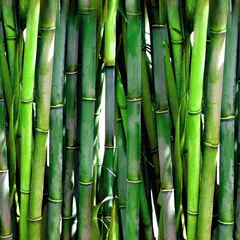
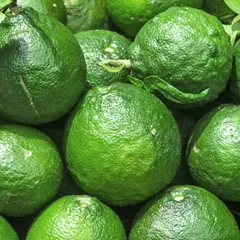
The top herbs in Wen Dan Tang are Crow-Dipper Rhizomes (Ban Xia), Bamboo Shavings (Zhu Ru) and Immature Bitter Oranges (Zhi Shi)
Wen Dan Tang
Source date: 1174 AD
Number of ingredients: 8 herbs
Key actions: Clears Phlegm. Clears Gallbladder. Regulates Qi. Harmonizes the Stomach.
Why might Wen Dan Tang help with chronic bronchitis?
Because it is a formula often recommended to help treat Qi Stagnation in Gallbladder and Stomach with Phlegm Heat, a pattern sometimes associated with chronic bronchitis. If it looks like you might suffer from Qi Stagnation in Gallbladder and Stomach with Phlegm Heat, this formula might help (although please seek confirmation with a professional practitioner beforehand).
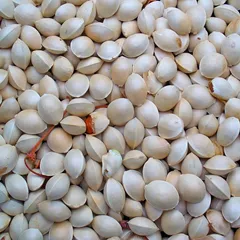
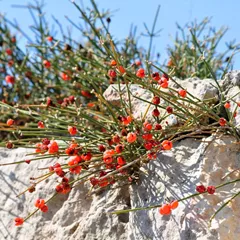
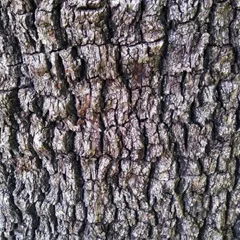
The top herbs in Ding Chuan Tang are Ginkgo Nuts (Bai Guo), Ephedra (Ma Huang) and Mulberry Bark (Sang Bai Pi)
Ding Chuan Tang
Source date: 1550 AD
Number of ingredients: 9 herbs
Key actions: Clears Lung Heat. Expectorant for asthma.
Why might Ding Chuan Tang help with chronic bronchitis?
Because it is a formula often recommended to help treat Wind-Cold invading the Interior with Phelgm-Heat, a pattern sometimes associated with chronic bronchitis. If it looks like you might suffer from Wind-Cold invading the Interior with Phelgm-Heat, this formula might help (although please seek confirmation with a professional practitioner beforehand).
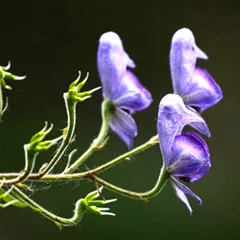


The top herbs in Fu Zi Tang are Prepared Aconite (Zhi Fu Zi), Atractylodes Rhizomes (Bai Zhu) and Poria-Cocos Mushrooms (Fu Ling)
Fu Zi Tang
Source date: 220 AD
Number of ingredients: 5 herbs
Key actions: Warms the Meridians. Assists the Yang. Dispels Cold. Transforms Dampness.
Why might Fu Zi Tang help with chronic bronchitis?
Because it is a formula often recommended to help treat Yang Deficiency with Cold-Damp, a pattern sometimes associated with chronic bronchitis. If it looks like you might suffer from Yang Deficiency with Cold-Damp, this formula might help (although please seek confirmation with a professional practitioner beforehand).

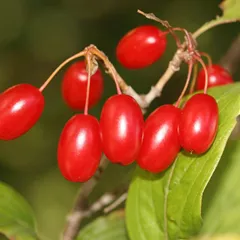
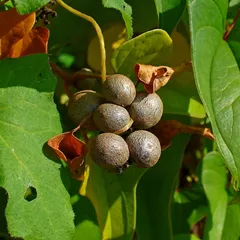
The top herbs in Ba Wei Di Huang Wan are Prepared Rehmannia (Shu Di huang), Cornelian Cherries (Shan Zhu Yu) and Yam (Shan Yao)
Ba Wei Di Huang Wan
Source date: 220 AD
Number of ingredients: 8 herbs
Key actions: Tonifies Yang. Warms the Kidneys and lower extremities.
Why might Ba Wei Di Huang Wan help with chronic bronchitis?
Because it is a formula often recommended to help treat Kidney Yang Deficiency, a pattern sometimes associated with chronic bronchitis. If it looks like you might suffer from Kidney Yang Deficiency, this formula might help (although please seek confirmation with a professional practitioner beforehand).
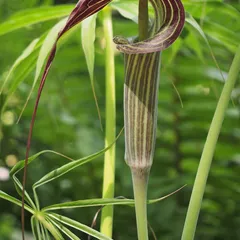

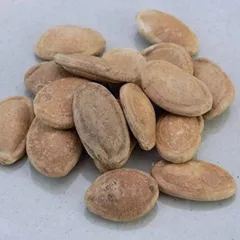
The top herbs in Qing Qi Hua Tan Wan are Arisaema With Bile (Dan Nan Xing), Baikal Skullcap Roots (Huang Qin) and Snake Gourd Seeds (Gua Lou Ren)
Qing Qi Hua Tan Wan
Source date: 1584 AD
Number of ingredients: 8 herbs
Key actions: Clears Heat. Transforms Phlegm. Directs Rebellious Qi downwards. Stops coughing.
Why might Qing Qi Hua Tan Wan help with chronic bronchitis?
Because it is a formula often recommended to help treat Phlegm-Heat, a pattern sometimes associated with chronic bronchitis. If it looks like you might suffer from Phlegm-Heat, this formula might help (although please seek confirmation with a professional practitioner beforehand).
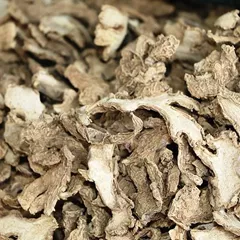
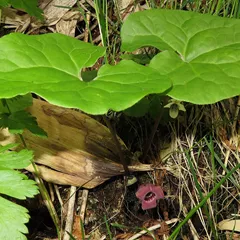

The top herbs in Ling Gan Wu Wei Jiang Xin Tang are Dried Ginger (Gan Jiang), Wild Ginger (Xi Xin) and Poria-Cocos Mushrooms (Fu Ling)
Ling Gan Wu Wei Jiang Xin Tang
Source date: 220 AD
Number of ingredients: 5 herbs
Key actions: Warms the Lungs. Transforms congested Fluids.
Why might Ling Gan Wu Wei Jiang Xin Tang help with chronic bronchitis?
Because it is a formula often recommended to help treat Cold-Phlegm, a pattern sometimes associated with chronic bronchitis. If it looks like you might suffer from Cold-Phlegm, this formula might help (although please seek confirmation with a professional practitioner beforehand).
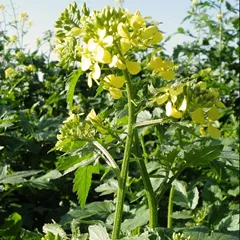
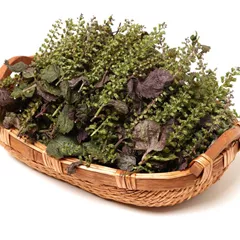

The top herbs in San Zi Yang Qin Tang are White Mustard Seeds (Bai Jie Zi), Perilla Seeds (Zi Su Zi) and Radish Seeds (Lai Fu Zi)
San Zi Yang Qin Tang
Source date: 1856 AD
Number of ingredients: 3 herbs
Key actions: Directs the Qi downward. Transforms Phlegm. Reduces harbored food.
Why might San Zi Yang Qin Tang help with chronic bronchitis?
Because it is a formula often recommended to help treat Phlegm clogging the Lungs with Qi Stagnation, a pattern sometimes associated with chronic bronchitis. If it looks like you might suffer from Phlegm clogging the Lungs with Qi Stagnation, this formula might help (although please seek confirmation with a professional practitioner beforehand).

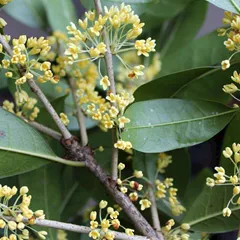

The top herbs in Shen Qi Wan are Prepared Aconite (Zhi Fu Zi), Cinnamon Twigs (Gui Zhi) and Prepared Rehmannia (Shu Di huang)
Shen Qi Wan
Why might Shen Qi Wan help with chronic bronchitis?
Because it is a formula often recommended to help treat Kidney Yang Deficiency, a pattern sometimes associated with chronic bronchitis. If it looks like you might suffer from Kidney Yang Deficiency, this formula might help (although please seek confirmation with a professional practitioner beforehand).

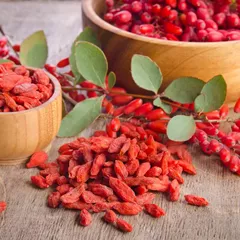

The top herbs in Zuo Gui Wan are Prepared Rehmannia (Shu Di huang), Goji Berries (Gou Qi Zi) and Cornelian Cherries (Shan Zhu Yu)
Zuo Gui Wan
Source date: 1624 AD
Number of ingredients: 8 herbs
Key actions: Nourishes the Yin. Strengthens the Kidneys. Fills the Essence. Augments the marrow.
Why might Zuo Gui Wan help with chronic bronchitis?
Because it is a formula often recommended to help treat , a pattern sometimes associated with chronic bronchitis. If it looks like you might suffer from , this formula might help (although please seek confirmation with a professional practitioner beforehand).

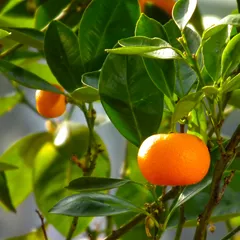

The top herbs in Di Tan Tang are Arisaema (Tian Nan Xing), Red Tangerine Peel (Ju Hong) and Crow-Dipper Rhizomes (Ban Xia)
Di Tan Tang
Source date: 1470 AD
Number of ingredients: 9 herbs
Key actions: Removes Phlegm. Opens the sensory orifices. Tonifies Qi.
Why might Di Tan Tang help with chronic bronchitis?
Because it is a formula often recommended to help treat , a pattern sometimes associated with chronic bronchitis. If it looks like you might suffer from , this formula might help (although please seek confirmation with a professional practitioner beforehand).


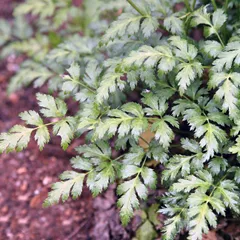
The top herbs in Huang Lian Wen Dan Tang are Crow-Dipper Rhizomes (Ban Xia), Bamboo Shavings (Zhu Ru) and Goldthread Rhizomes (Huang Lian)
Huang Lian Wen Dan Tang
Source date: 1852 AD
Number of ingredients: 7 herbs
Key actions: Clears Hot Phlegm. Clears Gallbladder Heat. Regulates Qi. Harmonizes the Stomach.
Why might Huang Lian Wen Dan Tang help with chronic bronchitis?
Because it is a formula often recommended to help treat , a pattern sometimes associated with chronic bronchitis. If it looks like you might suffer from , this formula might help (although please seek confirmation with a professional practitioner beforehand).


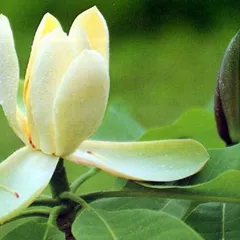
The top herbs in Su Zi Jiang Qi Tang are Perilla Seeds (Zi Su Zi), Crow-Dipper Rhizomes (Ban Xia) and Houpu Magnolia Bark (Hou Pu)
Su Zi Jiang Qi Tang
Source date: 650 AD
Number of ingredients: 8 herbs
Key actions: Directs rebellious Qi downward. Arrests wheezing. Stops coughing. Warms and transforms Phlegm-Cold.
Why might Su Zi Jiang Qi Tang help with chronic bronchitis?
Because it is a formula often recommended to help treat , a pattern sometimes associated with chronic bronchitis. If it looks like you might suffer from , this formula might help (although please seek confirmation with a professional practitioner beforehand).


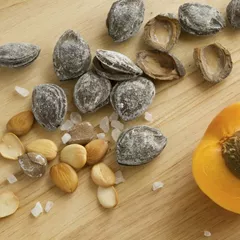
The top herbs in Ma Huang Tang are Ephedra (Ma Huang), Cinnamon Twigs (Gui Zhi) and Apricot Seeds (Xing Ren)
Ma Huang Tang
Source date: 220 AD
Number of ingredients: 4 herbs
Key actions: Releases exterior cold. Treats wheezing.
Why might Ma Huang Tang help with chronic bronchitis?
Because it is a formula often recommended to help treat , a pattern sometimes associated with chronic bronchitis. If it looks like you might suffer from , this formula might help (although please seek confirmation with a professional practitioner beforehand).



The top herbs in Li Zhong Wan are Dried Ginger (Gan Jiang), Ginseng (Ren Shen) and Atractylodes Rhizomes (Bai Zhu)
Li Zhong Wan
Source date: 220 AD
Number of ingredients: 4 herbs
Key actions: Warms the Middle Burner. Strengthens the Spleen and Stomach.
Why might Li Zhong Wan help with chronic bronchitis?
Because it is a formula often recommended to help treat , a pattern sometimes associated with chronic bronchitis. If it looks like you might suffer from , this formula might help (although please seek confirmation with a professional practitioner beforehand).



The top herbs in Shen Ling Bai Zhu San are Ginseng (Ren Shen), Atractylodes Rhizomes (Bai Zhu) and Poria-Cocos Mushrooms (Fu Ling)
Shen Ling Bai Zhu San
Source date: 1107 AD
Number of ingredients: 10 herbs
Key actions: Augments the Qi. Strengthens the Spleen. Leaches out Dampness. Stops diarrhea.
Why might Shen Ling Bai Zhu San help with chronic bronchitis?
Because it is a formula often recommended to help treat , a pattern sometimes associated with chronic bronchitis. If it looks like you might suffer from , this formula might help (although please seek confirmation with a professional practitioner beforehand).
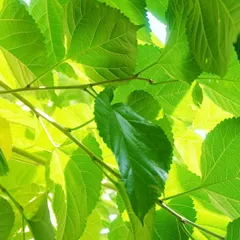
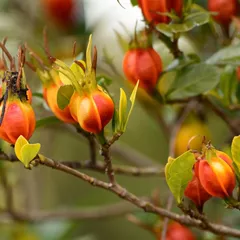

The top herbs in Sang Xing Tang are Mulberry Leaves (Sang Ye), Cape Jasmine Fruits (Zhi Zi) and Apricot Seeds (Xing Ren)
Sang Xing Tang
Why might Sang Xing Tang help with chronic bronchitis?
Because it is a formula often recommended to help treat , a pattern sometimes associated with chronic bronchitis. If it looks like you might suffer from , this formula might help (although please seek confirmation with a professional practitioner beforehand).

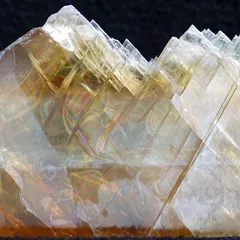

The top herbs in Qing Zao Jiu Fei Tang are Mulberry Leaves (Sang Ye), Gypsum (Shi Gao) and Dwarf Lilyturf Roots (Mai Dong)
Qing Zao Jiu Fei Tang
Source date: 1658 AD
Number of ingredients: 9 herbs
Key actions: Clears dryness. Moistens the Lungs.
Why might Qing Zao Jiu Fei Tang help with chronic bronchitis?
Because it is a formula often recommended to help treat , a pattern sometimes associated with chronic bronchitis. If it looks like you might suffer from , this formula might help (although please seek confirmation with a professional practitioner beforehand).


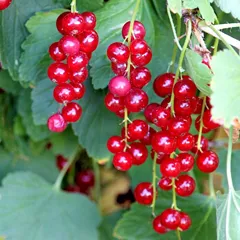
The top herbs in Sheng Mai San are Ginseng (Ren Shen), Dwarf Lilyturf Roots (Mai Dong) and Schisandra Berries (Wu Wei Zi)
Sheng Mai San
Source date: Yuan Dynasty
Number of ingredients: 3 herbs
Key actions: Augments Qi. Supplies the Yin. Stops excessive sweating. Generates Body Fluids.
Why might Sheng Mai San help with chronic bronchitis?
Because it is a formula often recommended to help treat , a pattern sometimes associated with chronic bronchitis. If it looks like you might suffer from , this formula might help (although please seek confirmation with a professional practitioner beforehand).



The top herbs in Ma Huang Xi Xin Fu Zi Tang are Ephedra (Ma Huang), Prepared Aconite (Zhi Fu Zi) and Wild Ginger (Xi Xin)
Ma Huang Xi Xin Fu Zi Tang
Source date: 220 AD
Number of ingredients: 3 herbs
Key actions: Tonifes the Yang. Releases the Exterior.
Why might Ma Huang Xi Xin Fu Zi Tang help with chronic bronchitis?
Because it is a formula often recommended to help treat , a pattern sometimes associated with chronic bronchitis. If it looks like you might suffer from , this formula might help (although please seek confirmation with a professional practitioner beforehand).
Xin Yi Qing Fei Yin
Source date: 1617
Number of ingredients: 10 herbs
Key actions: Spreads Lung Qi. Clears Heat. Unblocks the orifices (specifically the nose) .
Why might Xin Yi Qing Fei Yin help with chronic bronchitis?
Because it is a formula often recommended to help treat , a pattern sometimes associated with chronic bronchitis. If it looks like you might suffer from , this formula might help (although please seek confirmation with a professional practitioner beforehand).
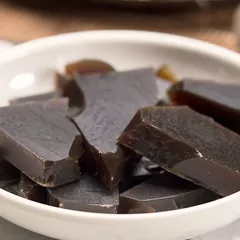
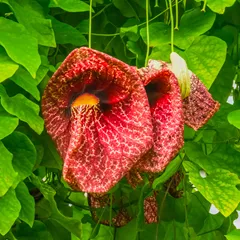

The top herbs in Bu Fei E Jiao Tang are Donkey-Hide Gelatin (E Jiao), Aristolochia Fruits (Ma Dou Ling) and Apricot Seeds (Xing Ren)
Bu Fei E Jiao Tang
Source date: 1119 AD
Number of ingredients: 6 herbs
Key actions: Nourishes the Yin. Controls coughing. Stops bleeding. Tonifies the Lungs.
Why might Bu Fei E Jiao Tang help with chronic bronchitis?
Because it is a formula often recommended to help treat , a pattern sometimes associated with chronic bronchitis. If it looks like you might suffer from , this formula might help (although please seek confirmation with a professional practitioner beforehand).
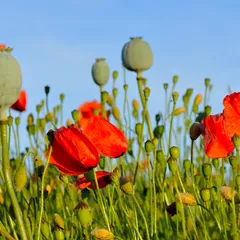
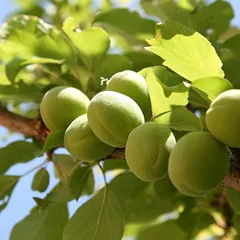

The top herbs in Jiu Xian San are Poppy Capsules (Ying Su Ke), Chinese Plums (Wu Mei) and Schisandra Berries (Wu Wei Zi)
Jiu Xian San
Source date: Yuan dynasty
Number of ingredients: 9 herbs
Key actions: Secures the Lungs. Stops coughing. Augments Qi . Nourishes Yin.
Why might Jiu Xian San help with chronic bronchitis?
Because it is a formula often recommended to help treat , a pattern sometimes associated with chronic bronchitis. If it looks like you might suffer from , this formula might help (although please seek confirmation with a professional practitioner beforehand).
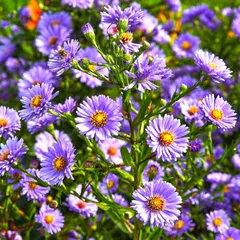
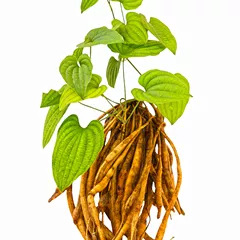
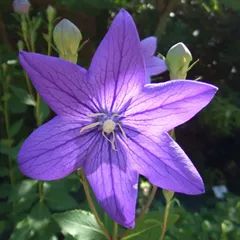
The top herbs in Zhi Sou San are Aster Roots (Zi Wan), Stemona Roots (Bai Bu) and Platycodon Roots (Jie Geng)
Zhi Sou San
Source date: 1732 AD
Number of ingredients: 7 herbs
Key actions: Transforms Phlegm and stops coughing. Disperses the Exterior. Spreads the Lung Qi.
Why might Zhi Sou San help with chronic bronchitis?
Because it is a formula often recommended to help treat , a pattern sometimes associated with chronic bronchitis. If it looks like you might suffer from , this formula might help (although please seek confirmation with a professional practitioner beforehand).



The top herbs in Bu Fei Tang are Ginseng (Ren Shen), Milkvetch Roots (Huang Qi) and Schisandra Berries (Wu Wei Zi)
Bu Fei Tang
Source date: 1331 AD
Number of ingredients: 6 herbs
Key actions: Augments the Qi. Stabilizes the Exterior.
Why might Bu Fei Tang help with chronic bronchitis?
Because it is a formula often recommended to help treat , a pattern sometimes associated with chronic bronchitis. If it looks like you might suffer from , this formula might help (although please seek confirmation with a professional practitioner beforehand).



The top herbs in Ren Shen Ge Jie San are Tokay Geckos (Ge Jie), Ginseng (Ren Shen) and Poria-Cocos Mushrooms (Fu Ling)
Ren Shen Ge Jie San
Source date: 1047 AD
Number of ingredients: 8 herbs
Key actions: Tonifies the Qi. Augments the Kidneys. Stops coughing. Arrests wheezing.
Why might Ren Shen Ge Jie San help with chronic bronchitis?
Because it is a formula often recommended to help treat , a pattern sometimes associated with chronic bronchitis. If it looks like you might suffer from , this formula might help (although please seek confirmation with a professional practitioner beforehand).
Symptoms related to chronic bronchitis
Poor appetite Dry throat Hot palms and soles Nausea Dizziness Weak voice Night sweats Palpitations Focal distention Focal distention of the chest

